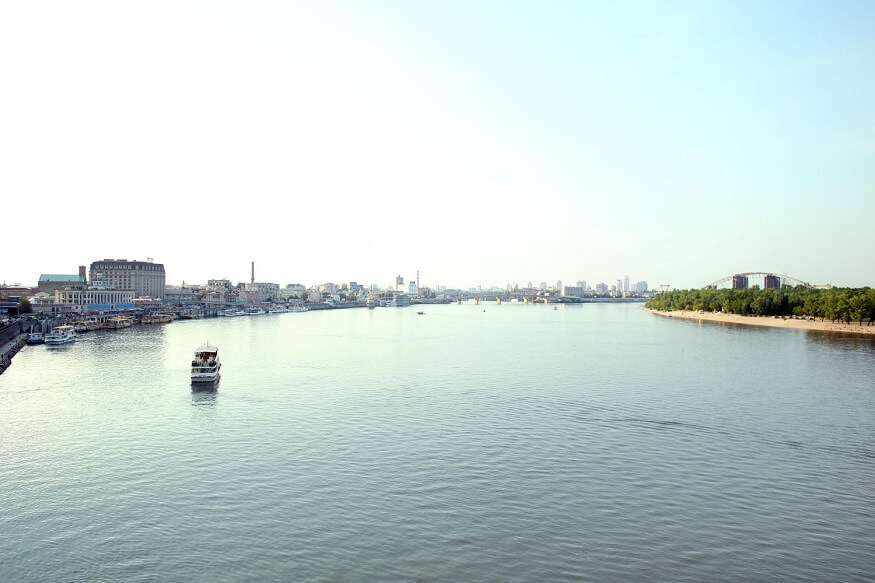River Nile and Ancient Society:
Here are the key points about the Nile contributed to the development of society
Fertile Soil: The Resume Nile’s annual flooding deposited nutrient-rich silt on its banks, creating fertile soil that allowed for abundant agriculture.
Agricultural Surplus: The fertile land enabled Egypt to produce surplus crops like wheat, barley, and flax, supporting a growing population and facilitating economic development.
Irrigation System: Egyptians developed an intricate system of canals and dikes to control the River Nile’s floodwaters, enhancing agricultural productivity.
Specialisation: Surplus food production led to specialisation in crafts, trade, and administration, contributing to social complexity.
Urbanisation: One of the important developments of society is urbanisation. Agricultural success led to the growth of settlements, eventually evolving into cities like Memphis and Thebes.
Trade Network: The Nile served as a natural trade route, enabling the exchange of goods between Upper and Lower Egypt and with neighbouring regions.
Transportation: The river provided a means of transportation via boats, allowing for easier movement of people, goods, and ideas.
Cultural Importance: The Nile held religious significance, was associated with gods, and was believed to be the source of life and fertility.
Calendar: The Nile’s annual flood cycle influenced the Egyptian calendar, marking crucial events such as planting and harvesting.
Centralised Governance: The dependable agricultural system supported a stable society that enabled the emergence of centralised authority and pharaohs.
Monuments and Architecture: The abundance of resources facilitated the construction of monumental structures like pyramids and temples.
Religious Rituals: The flooding of the Nile was tied to religious rituals, connecting the people with their gods and reinforcing social cohesion.
Trade with Nubia: The Nile allowed trade and cultural exchange with Nubia, bringing valuable resources like gold and exotic goods.
Natural Defence: The Nile’s natural moats and marshes protected against invasions and facilitated Egypt’s isolation.
Hygiene and Water Supply: The Nile was a reliable source of freshwater, essential for drinking, cooking, and hygiene in a dry environment.
Also Read: Where are pyramids located? What are some famous pyramids?
River Indus and the Indus Valley Civilization:
Let’s explore the key points about the River Indus and the Indus Valley Civilization.
Agricultural Advantages: Similar to the Nile, the Indus River’s annual floods enriched the soil, promoting agricultural productivity.
Urban Planning: Cities like Mohenjo-daro were planned with advanced drainage systems, showcasing the civilization’s engineering expertise.
Sewage Systems: Sophisticated sewage systems improved sanitation and hygiene, contributing to public health.
Trade Routes: The Indus River facilitated trade both by water and land, connecting the civilization with Mesopotamia and beyond.
Harbours: Coastal settlements along the Indus Delta developed into thriving ports, supporting maritime trade.
Craft Specialisation: The availability of resources led to specialised crafts like pottery, textiles, and metalwork, fostering economic diversity.
Intra-Civilization Trade: The Indus Valley Civilization engaged in trade among its cities, promoting cultural exchange.
Trade Partners: The civilization traded with regions like Mesopotamia for resources like timber, metals, and precious stones.
Script and Seals: The civilization’s script and seals, possibly used for administrative purposes, indicate a developed system of communication.
Cultural Exchange: The presence of seals in Mesopotamia suggests cross-cultural interactions between the Indus Valley Civilization and its neighbours.
Religious Practices: The Indus River held religious significance, possibly as a source of divine blessings, shaping the civilization’s religious practices.
Livelihoods: Fishing in the Indus River provided a source of food and livelihood for the local population.
Urban Centres: Cities’ proximity to the river allowed for efficient transportation and trade within the civilization.
Social Hierarchy: The accessibility to resources influenced the emergence of social hierarchies, with elites benefiting from the surplus.
Artistic Expression: The civilization’s art depicted animals and river-related themes, reflecting the importance of the river in daily life.
Also Read: Why is it Important to Study Ancient Civilisation – Benefits
Comparative Points:
Flood Predictability: Both rivers’ predictable flood cycles allowed for planned agriculture and resource management.
Natural Boundaries: The rivers acted as natural boundaries, protecting against external threats.
Resource Distribution: The rivers distributed resources across their valleys, enabling the emergence of diverse societies.
Trade Hubs: Both river valleys became trade hubs, facilitating cultural diffusion and the exchange of goods.
Cultural Development: The rivers supported cultural growth, leading to the development of art, architecture, and religious practices.
Dependency and Adaptation: Societies adapted to the rivers’ cycles, fostering a strong connection between people and their environment.
Water Management: Both civilizations developed advanced systems for managing water, ensuring agricultural success.
Labor Division: Surplus food allowed for labour specialisation, supporting the growth of complex societies.
Religious Connotations: Both rivers held religious significance, influencing cultural beliefs and practices.
Cultural Continuity: The rivers’ stability contributed to the longevity and continuity of both civilizations.
Also Read: Stone Age Definition, Tools, Periods, Peoples, Art, & Facts
Challenges and Decline:
Here are some important points about the challenges and decline of the rivers.
Environmental Vulnerability: Dependency on the rivers also made societies vulnerable to changes in the river’s behaviour.
Environmental Degradation: Over time, intensive agriculture led to soil salinization and environmental degradation.
Unpredictable Floods: Despite the benefits, occasional unpredictable floods could cause devastation.
Hydraulic Challenges: Maintaining complex water management systems requires constant effort and expertise.
Decline in the Indus Valley: Factors such as environmental changes and shifts in trade routes contributed to the decline of the Indus Valley Civilization.
Decline in Egypt: Changing climatic conditions and invasions led to the decline of ancient Egypt’s prosperity.
Legacies:
Cultural Influence: The legacies of these civilizations continue to influence art, architecture, and religious practices in their respective regions.
Agricultural Practices: The knowledge of river-based agriculture has influenced farming practices through generations.
Architectural Achievements: The engineering feats of both civilizations inspire modern architectural and urban planning.
Historical Understanding: The study of these civilizations provides insights into ancient human societies, shaping our understanding of ancient human history.
Conclusion:
The Nile and Indus Rivers were instrumental in shaping ancient societies by providing essential resources, trade routes, cultural exchange, and facilitating the development of complex civilizations. The interplay between these rivers and human endeavours underscores the intricate relationship between geography, environment, and the evolution of societies. Visit EuroSchool to learn more about our world class campus, teachers and our innovative ways of teaching. The study of these civilizations provides insights into ancient human societies, shaping our understanding of ancient human history.










